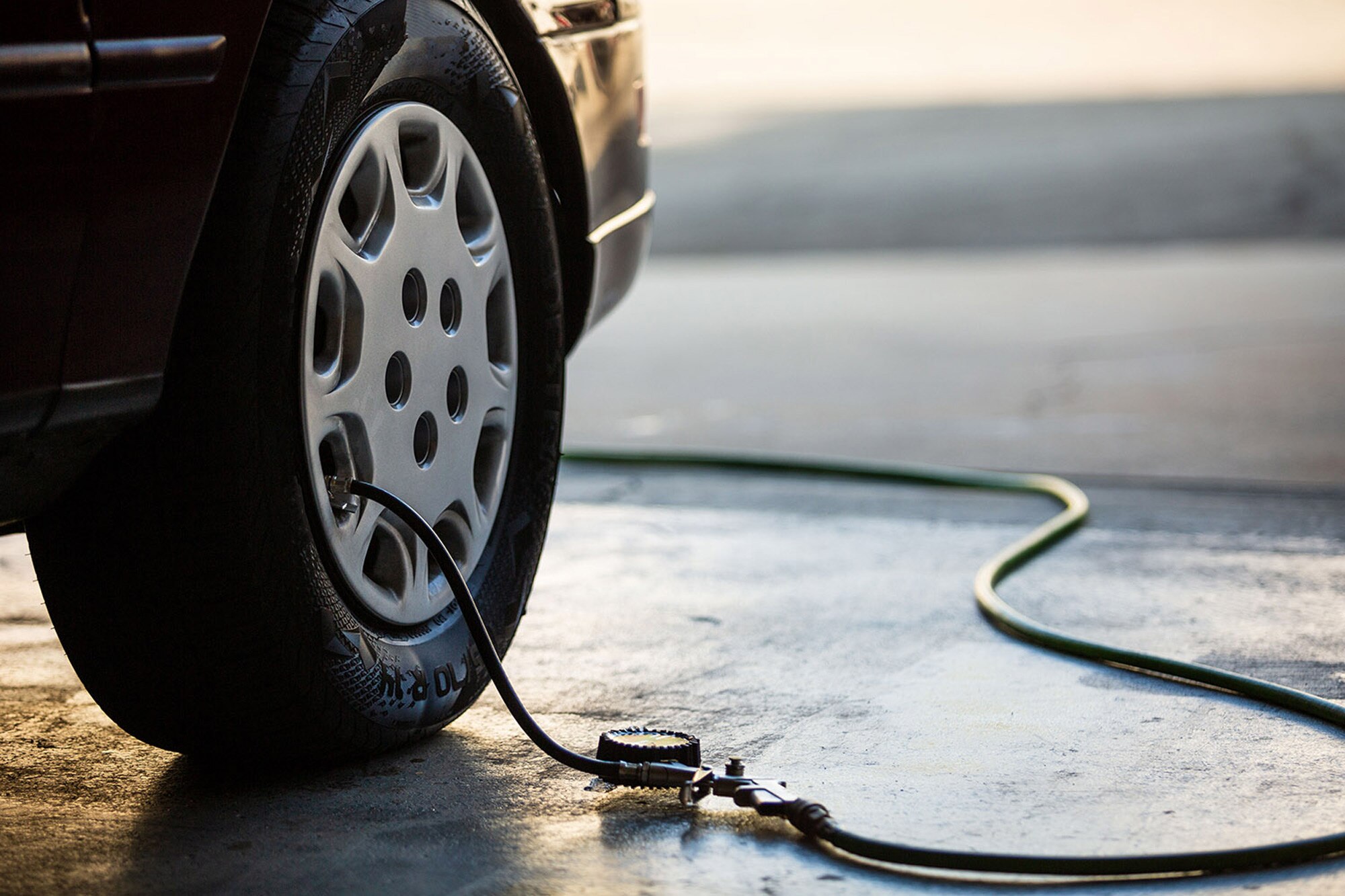Tire Solution: The Influence of Weather
When it comes to guaranteeing optimum performance and safety and security on the roadway, comprehending the influence of weather problems on tire solution is important. GMC Tire Service. In this conversation, we will certainly explore the complex relationship between climate conditions and tire service, losing light on the significance of weather-specific tire upkeep methods and factors to consider.
Warm and Tire Efficiency
When exposed to high temperature levels, tires experience adjustments in performance that can significantly affect vehicle security and handling. The warm generated from prolonged driving or heat problems causes the tire rubber to soften, bring about minimized tread life and increased wear. As the rubber becomes softer, the tire's hold when traveling lessens, influencing braking distances and overall traction. In extreme cases, excessive warmth can also cause tire blowouts, positioning a severe safety danger to the car and its passengers.

Winter Results
Cold weather condition problems can have a substantial effect on tire performance and safety. As temperature levels decrease, tire rubber can set, causing lowered traction on icy or snow-covered roads. In winter, tires might additionally lose atmospheric pressure extra quickly, which can impact managing and gas efficiency. Additionally, cool temperatures can trigger tire sidewalls to tense, boosting the threat of damages from gaps or various other road risks.
To reduce the results of winter on tires, it is crucial to on a regular basis inspect tire pressure and inflate them to the producer's suggested degrees. Making use of winter season or all-season tires made for winter problems can additionally boost grip and grip on icy or snowy roadways. Correct tire maintenance, including regular examinations for wear and damages, ends up being also more critical throughout chillier months to guarantee optimal performance and safety.
Rainy Conditions Influence
During wet conditions, tire performance and security can be substantially affected by the wet road surface areas and reduced exposure. The tread pattern of tires plays a critical role in keeping grip on damp roadways. Tires with damaged treads are much more susceptible to hydroplaning, where a layer of water builds up between the road and the tire surface area, resulting in loss of traction. To fight this, drivers should frequently inspect their tires for appropriate tread depth and consider buying tires specifically designed for wet problems.
Furthermore, stormy weather can likewise reduce exposure, making it testing for chauffeurs to see the road in advance plainly (GMC Tire Service). In such problems, it is necessary to readjust driving speeds appropriately and keep a secure complying with range to enable unexpected stops. Properly inflated tires can also aid in preserving control on wet roads by supplying far better handling and grip
Snow and Tire Safety And Security
Snow-covered roadways posture distinct challenges for motorists, stressing the significance of proper tire selection and upkeep. When driving in snowy conditions, having the ideal tires can make a considerable difference in safety and efficiency. Winter tires are click to read more made with unique rubber compounds and walk patterns to offer better traction on snow and ice compared to all-season tires. The much deeper treads and sipes of wintertime tires aid hold the road better, reducing the danger of slipping and moving.

It is essential to follow producer guidelines when using and mounting tire chains to protect against damage to the tires and vehicle. By choosing the best tires, maintaining proper inflation, and considering additional traction aids like tire chains, chauffeurs can improve their security when navigating snow-covered roads.
Weather-Related Tire Maintenance
When confronted with different climate problems, correct tire upkeep becomes see this here an essential element of car safety and security and performance. Weather-related tire upkeep includes a series of practices targeted at making certain optimum tire function and longevity in different weather situations. One essential aspect of weather-related tire upkeep is tire pressure guideline. Fluctuating temperatures can create tire pressure to vary, impacting grip and gas effectiveness. Routinely adjusting and examining tire stress according to manufacturer suggestions is necessary for risk-free driving in transforming weather. Additionally, tire tread deepness plays a significant duty in managing various weather aspects. Tires with ample tread depth provide far better hold on damp or icy roads, reducing the risk of skidding or hydroplaning. Checking tire step frequently and changing tires when step wear reaches a particular depth is vital for keeping grip and security in negative weather condition. By prioritizing weather-related tire maintenance, drivers can improve safety and security, improve car performance, and extend the life-span of their tires.
Conclusion
To conclude, weather condition conditions have a considerable influence on tire performance and security. From heat influencing tire pressure and wear to winter lowering grip, it is necessary to think about the climate when keeping and utilizing tires. Stormy problems can decrease grip and cause hydroplaning, while snow can enhance the danger of accidents if useful site tires are not effectively geared up. Weather-related tire upkeep is critical in making certain optimal efficiency and security when traveling.
In this conversation, we will certainly explore the complex connection between weather condition problems and tire solution, losing light on the value of weather-specific tire upkeep techniques and considerations.
